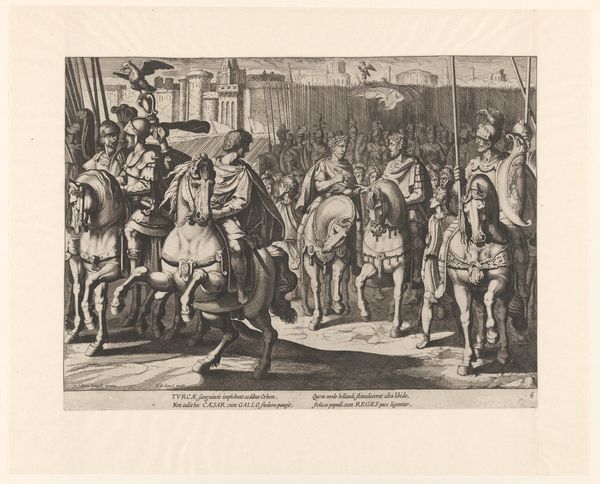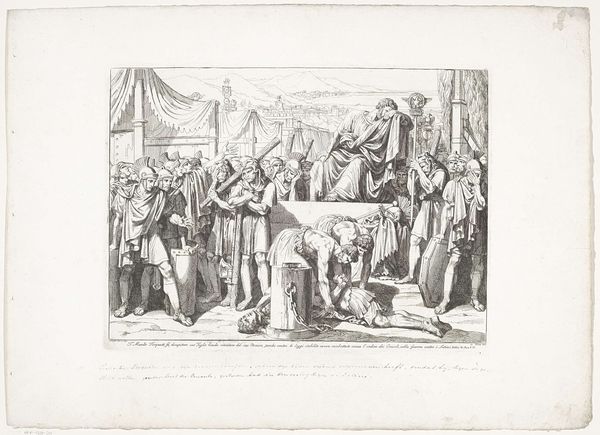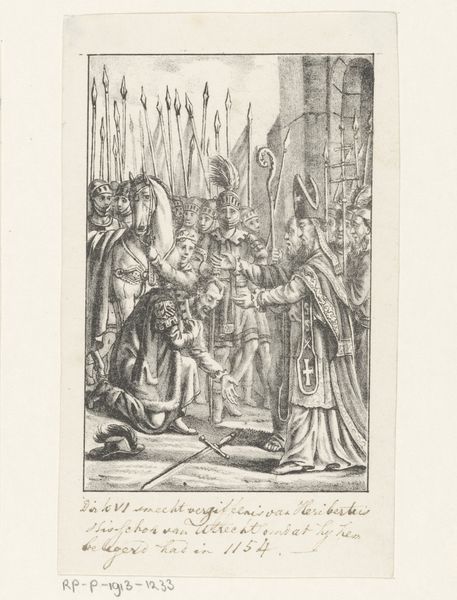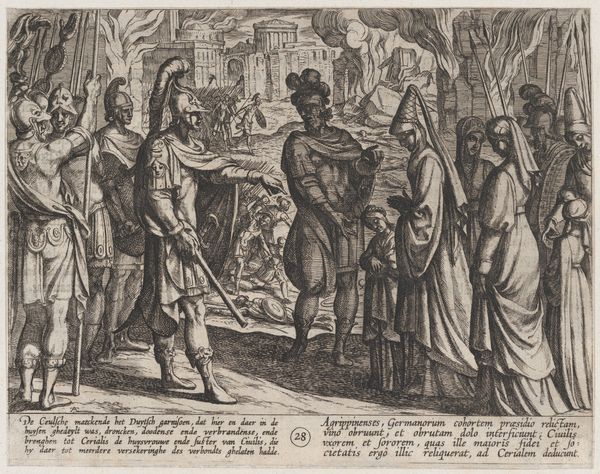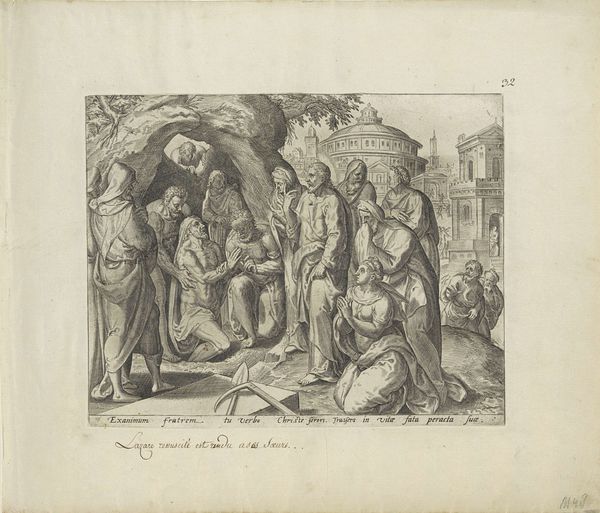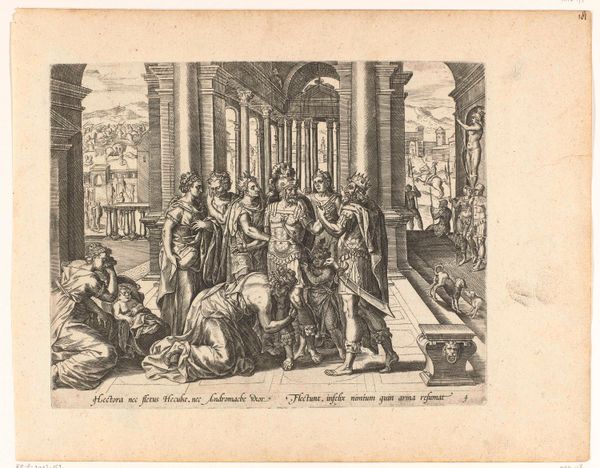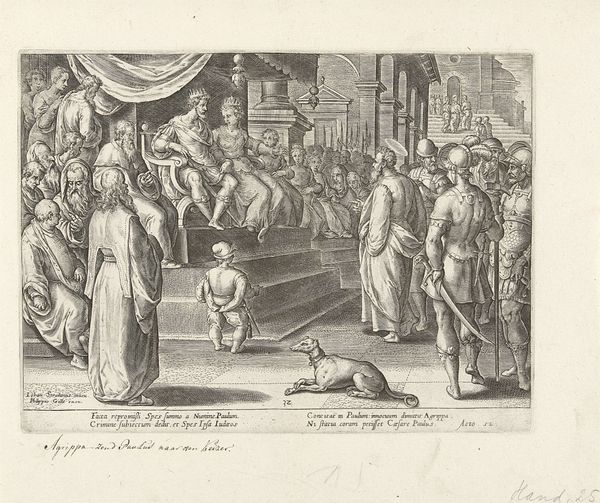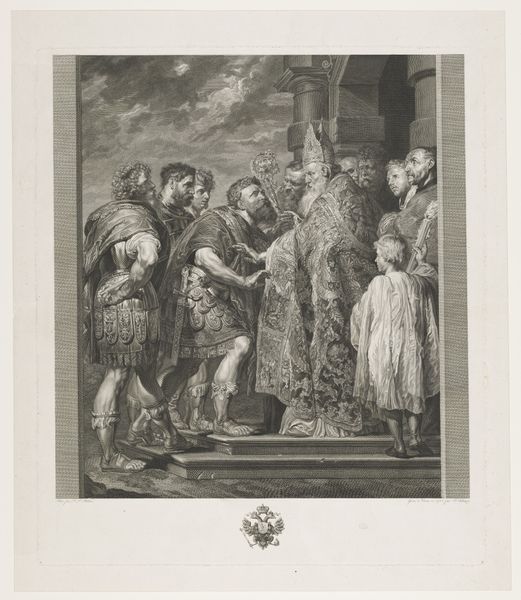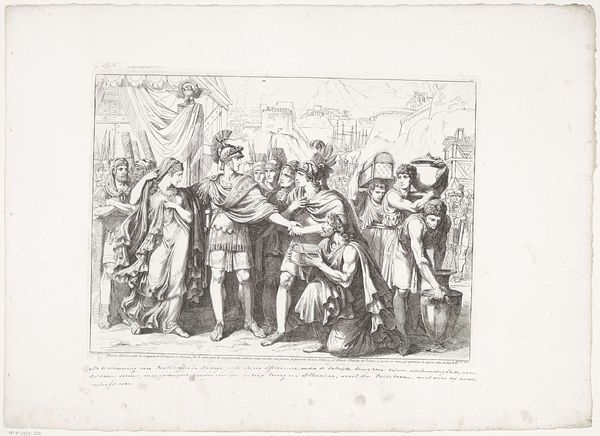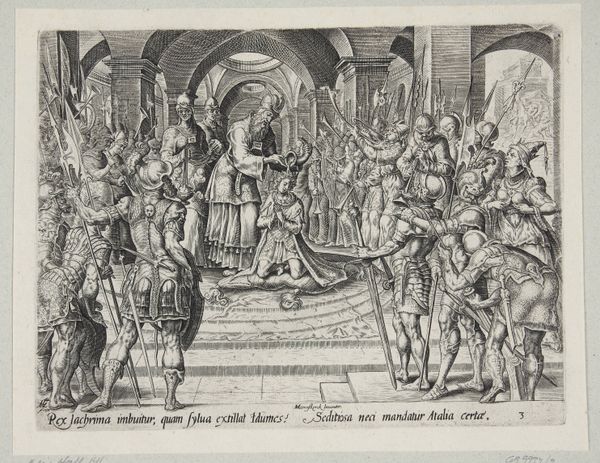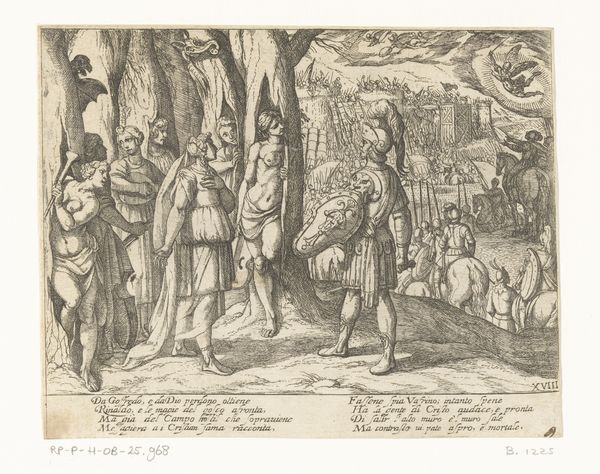
print, engraving
#
narrative-art
#
baroque
# print
#
figuration
#
line
#
history-painting
#
engraving
Dimensions: height 194 mm, width 245 mm
Copyright: Rijks Museum: Open Domain
Curator: This print, titled "The Marriage of Tobias and Sarah," resides here at the Rijksmuseum. Dating roughly between 1556 and 1633, the authorship is, alas, currently anonymous. What strikes you first about this baroque engraving? Editor: It feels quite stagey, doesn’t it? Everyone seems carefully placed, their expressions restrained, like figures in a religious tableau. And despite the medium being engraving, there’s a tangible sense of depth created through these dense, almost oppressive lines. Curator: The social context of printmaking at the time demanded skilled labor. Each line meticulously etched to create gradations in tone. This would have been circulated, reproduced. The economics of images! Who were its intended consumers, and how would it shape their understandings of the subject? Editor: And look at how those lines are used, not just for depth, but to highlight key symbolic elements! The angel on the left, its wings so carefully rendered. Its presence tells us that divine intervention is at play in this union. And notice Tobias' hand placed over Sarah’s – a gesture not just of marriage, but of protection. The couple seems almost dwarfed by Moses standing over them, which suggests that the Law and the covenant with God form the background of this relationship. Curator: I think that the deliberate application of line carries inherent value – the engraver imbues a narrative, as we see the labor embedded in creating the forms to communicate narrative of Tobias and Sarah's marriage through detailed garments and carefully presented bodies. How would its beholders, possibly less acquainted with color renderings, decode its grayscale language and absorb the teachings intertwined? Editor: Absolutely, but the grayscale lends it a weightiness too! The absence of color focuses the mind on the moral seriousness of the scene. Even the domestic scene in the back is presented in such a careful manner; these muted colors don’t distract from the themes of fidelity and faith. It almost feels like the artist is directing the audience on where their attention should be drawn to! Curator: So it serves not only as a historical record or artistic display but as a facilitator of knowledge! What can it show us about Baroque modes of artistic production and theological dissemination through widely distributed graphic images? Editor: Ultimately, beyond the historical and religious narrative, one might say it's the power of visual storytelling through recognizable characters and universal ideas. That continues to resonate, doesn’t it? Curator: Indeed, reflecting on the fusion of social circulation and biblical instruction here is something worth further thought and appreciation!
Comments
No comments
Be the first to comment and join the conversation on the ultimate creative platform.
